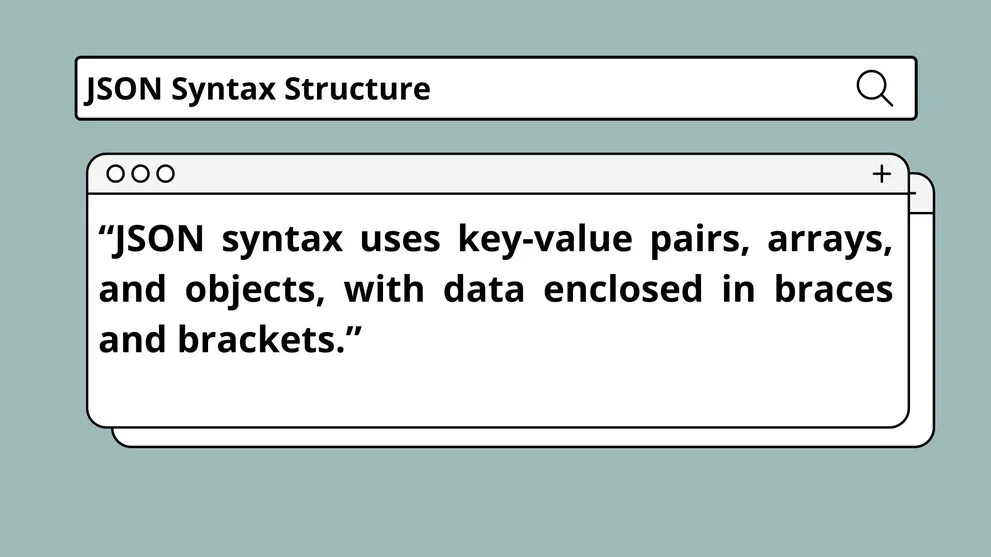JSON Syntax and Structure
Learn JSON with examples

In this blog we will look into
JSON String
JSON supports a limited set of data types, including strings, numbers, booleans, and null. Properly formatting these data types is essential for ensuring your JSON data is valid and can be accurately interpreted by any system consuming it. One of the key advantages of JSON’s limited data types is its simplicity and ease of use across different programming languages and platforms. Strings must be enclosed in double quotes, while numbers can be integers or floating-point values without quotes. Booleans are represented as true or false (lowercase), and null is used to indicate the absence of a value. When working with more complex data structures, JSON allows for nesting objects and arrays. This flexibility enables developers to represent hierarchical data efficiently, making it ideal for APIs and configuration files. It’s important to note that JSON doesn’t support comments, so all information must be represented as part of the data structure itself. To ensure your JSON is well-formed, pay attention to commas separating elements in arrays and key-value pairs in objects. Trailing commas are not allowed, and all keys in an object must be unique. Many modern development environments and online tools offer JSON validation services, which can be invaluable for catching syntax errors and ensuring your data is properly formatted.
JSON Boolean
Mastering the proper formatting of these JSON data types will enable you to create well-structured, unambiguous data that can be reliably processed by APIs, databases, and other applications. Understanding the nuances of JSON data types is a fundamental skill for any developer working with this ubiquitous data format.
JSON Number
Strings in JSON must be enclosed in double quotes, and they can contain any valid Unicode characters. Numbers in JSON can be integers, floats, or even scientific notation. Booleans are simply the values “true” or “false”, with no quotes. The null value represents the absence of a value. Arrays in JSON are ordered collections of values, enclosed in square brackets and separated by commas. They can contain any valid JSON data type, including other arrays or objects. Objects, on the other hand, are unordered collections of key-value pairs, enclosed in curly braces. The keys must be strings, while the values can be any JSON data type. JSON’s simplicity and flexibility make it an ideal format for data exchange between different systems and programming languages. It’s human-readable and easy to parse, which contributes to its widespread adoption in web APIs and configuration files. Unlike XML, JSON is less verbose and doesn’t require closing tags, resulting in smaller file sizes and faster transmission times. Moreover, JSON’s structure closely mirrors the object notation in many programming languages, particularly JavaScript, making it intuitive for developers to work with. This natural mapping between JSON and native data structures in various programming languages simplifies data serialization and deserialization processes, reducing the likelihood of errors and improving overall efficiency in data handling.